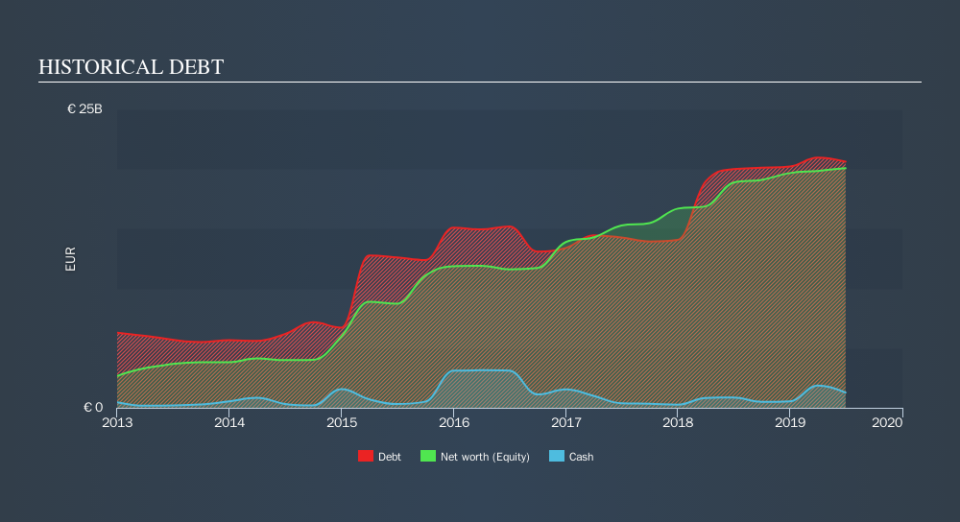Is Vonovia (ETR:VNA) A Risky Investment?

Warren Buffett famously said, 'Volatility is far from synonymous with risk.' When we think about how risky a company is, we always like to look at its use of debt, since debt overload can lead to ruin. We can see that Vonovia SE (ETR:VNA) does use debt in its business. But should shareholders be worried about its use of debt?
When Is Debt A Problem?
Debt is a tool to help businesses grow, but if a business is incapable of paying off its lenders, then it exists at their mercy. Ultimately, if the company can't fulfill its legal obligations to repay debt, shareholders could walk away with nothing. However, a more common (but still painful) scenario is that it has to raise new equity capital at a low price, thus permanently diluting shareholders. By replacing dilution, though, debt can be an extremely good tool for businesses that need capital to invest in growth at high rates of return. When we think about a company's use of debt, we first look at cash and debt together.
Check out our latest analysis for Vonovia
What Is Vonovia's Debt?
The chart below, which you can click on for greater detail, shows that Vonovia had €20.6b in debt in June 2019; about the same as the year before. However, it does have €1.28b in cash offsetting this, leading to net debt of about €19.3b.
How Healthy Is Vonovia's Balance Sheet?
The latest balance sheet data shows that Vonovia had liabilities of €3.66b due within a year, and liabilities of €27.1b falling due after that. Offsetting these obligations, it had cash of €1.28b as well as receivables valued at €340.5m due within 12 months. So it has liabilities totalling €29.2b more than its cash and near-term receivables, combined.
Given this deficit is actually higher than the company's massive market capitalization of €26.0b, we think shareholders really should watch Vonovia's debt levels, like a parent watching their child ride a bike for the first time. In the scenario where the company had to clean up its balance sheet quickly, it seems likely shareholders would suffer extensive dilution. The balance sheet is clearly the area to focus on when you are analysing debt. But ultimately the future profitability of the business will decide if Vonovia can strengthen its balance sheet over time. So if you're focused on the future you can check out this free report showing analyst profit forecasts.
In the last year Vonovia wasn't profitable at an EBIT level, but managed to grow its revenue by18%, to €4.1b. We usually like to see faster growth from unprofitable companies, but each to their own.
Caveat Emptor
Importantly, Vonovia had negative earnings before interest and tax (EBIT), over the last year. Indeed, it lost €375m at the EBIT level. When we look at that alongside the significant liabilities, we're not particularly confident about the company. It would need to improve its operations quickly for us to be interested in it. But on the bright side the company actually produced a statutory profit of €1.2b and free cash flow of €1.2b. So one might argue that there's still a chance it can get things on the right track. For riskier companies like Vonovia I always like to keep an eye on the long term profit and revenue trends. Fortunately, you can click to see our interactive graph of its profit, revenue, and operating cashflow.
If you're interested in investing in businesses that can grow profits without the burden of debt, then check out this free list of growing businesses that have net cash on the balance sheet.
We aim to bring you long-term focused research analysis driven by fundamental data. Note that our analysis may not factor in the latest price-sensitive company announcements or qualitative material.
If you spot an error that warrants correction, please contact the editor at editorial-team@simplywallst.com. This article by Simply Wall St is general in nature. It does not constitute a recommendation to buy or sell any stock, and does not take account of your objectives, or your financial situation. Simply Wall St has no position in the stocks mentioned. Thank you for reading.

 Yahoo Finance
Yahoo Finance 
